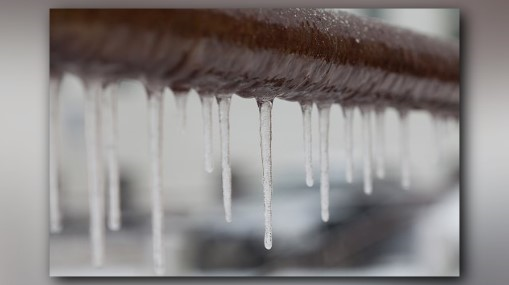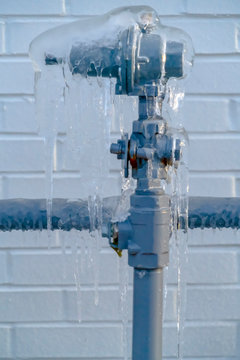Advice for Preventing Frozen Pipes in Cold Weather: Specialist Advice
Advice for Preventing Frozen Pipes in Cold Weather: Specialist Advice
Blog Article
The article author is making a number of great pointers regarding Helpful Tips to Prevent Frozen Pipes this Winter in general in the article beneath.

Winter can ruin your pipes, specifically by freezing pipelines. Here's just how to avoid it from happening and what to do if it does.
Intro
As temperatures decline, the risk of icy pipelines increases, possibly resulting in pricey repair work and water damages. Understanding exactly how to stop icy pipes is crucial for house owners in cool climates.
Comprehending Icy Pipelines
What creates pipes to freeze?
Pipes freeze when revealed to temperatures below 32 ° F (0 ° C) for extended periods. As water inside the pipes freezes, it broadens, putting pressure on the pipe walls and potentially creating them to break.
Threats and problems
Frozen pipes can result in supply of water disruptions, home damage, and expensive repair work. Burst pipelines can flood homes and cause extensive architectural damage.
Signs of Frozen Piping
Determining frozen pipes early can stop them from bursting.
Just how to determine icy pipes
Look for reduced water flow from taps, unusual odors or noises from pipes, and noticeable frost on subjected pipelines.
Avoidance Tips
Protecting susceptible pipelines
Wrap pipes in insulation sleeves or utilize heat tape to safeguard them from freezing temperatures. Focus on pipes in unheated or exterior locations of the home.
Home heating strategies
Maintain indoor areas adequately heated up, especially areas with pipes. Open up cupboard doors to allow cozy air to flow around pipes under sinks.
Protecting Outside Plumbing
Yard hose pipes and outdoor taps
Detach and drain pipes yard hoses prior to wintertime. Install frost-proof faucets or cover outside faucets with protected caps.
What to Do If Your Pipes Freeze
Immediate activities to take
If you suspect icy pipelines, keep taps open to soothe pressure as the ice melts. Utilize a hairdryer or towels taken in hot water to thaw pipes gradually.
Long-Term Solutions
Architectural adjustments
Take into consideration rerouting pipes away from exterior wall surfaces or unheated areas. Add additional insulation to attic rooms, cellars, and crawl spaces.
Upgrading insulation
Invest in top notch insulation for pipelines, attic rooms, and wall surfaces. Proper insulation assists preserve constant temperature levels and minimizes the danger of icy pipes.
Conclusion
Avoiding frozen pipelines requires proactive procedures and quick reactions. By recognizing the reasons, indications, and safety nets, homeowners can protect their pipes throughout cold weather.
5 Ways to Prevent Frozen Pipes
Drain Outdoor Faucets and Disconnect Hoses
First, close the shut-off valve that controls the flow of water in the pipe to your outdoor faucet. Then, head outside to disconnect and drain your hose and open the outdoor faucet to allow the water to completely drain out of the line. Turn off the faucet when done. Finally, head back to the shut-off valve and drain the remaining water inside the pipe into a bucket or container. Additionally, if you have a home irrigation system, you should consider hiring an expert to clear the system of water each year.
Insulate Pipes
One of the best and most cost-effective methods for preventing frozen water pipes is to wrap your pipes with insulation. This is especially important for areas in your home that aren’t exposed to heat, such as an attic. We suggest using foam sleeves, which can typically be found at your local hardware store.
Keep Heat Running at 65
Your pipes are located inside your walls, and the temperature there is much colder than the rest of the house. To prevent your pipes from freezing, The Insurance Information Institute suggests that you keep your home heated to at least 65 degrees, even when traveling. You may want to invest in smart devices that can keep an eye on the temperature in your home while you’re away.
Leave Water Dripping
Moving water — even a small trickle — can prevent ice from forming inside your pipes. When freezing temps are imminent, start a drip of water from all faucets that serve exposed pipes. Leaving a few faucets running will also help relieve pressure inside the pipes and help prevent a rupture if the water inside freezes.
Open Cupboard Doors
Warm your kitchen and bathroom pipes by opening cupboards and vanities. You should also leave your interior doors ajar to help warm air circulate evenly throughout your home.

I'm just very involved in Helpful Tips to Prevent Frozen Pipes this Winter and I really hope you enjoyed reading the new blog posting. Loved our piece? Please share it. Let somebody else find it. Thanks a bunch for being here. Don't hesitate to stop by our site back soon.
Schedule Service Now Report this page